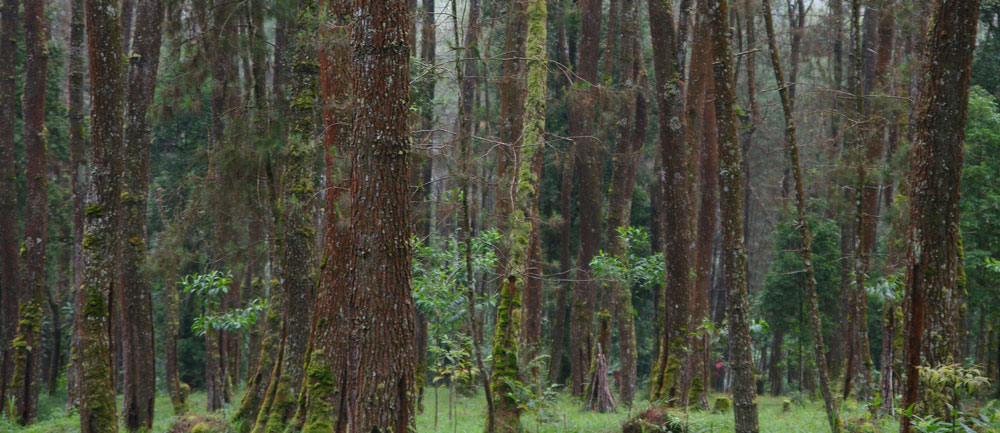Rabbinical School Divrei Torah Tu Bi-Shvat: Nurturing the Tree of Life


There is little reference to Tu bi-Shvat in the early medieval authorities, and even Rabbi Joseph Karo’s Shulhan Arukh merely notes that one may not proclaim a fast on Tu bi-Shvat, and that penitential prayers are omitted on that day.
That’s it as far as halakha. But where law stops, custom begins, and it has become a custom to observe Tu bi-Shvat as a festive day. With the dramatic rise of Jewish agricultural activity in the Land of Israel over the last century, Tu bi-Shvat took on a dimension as the Jewish Arbor Day, devoted to planting trees and restoring forests. More recently, American Jews – with a growing interest in agriculture and environmental sustainability as well as mysticism – have popularized the Tu bi-Shvat Seder, a liturgy based on kabbalistic forms.
This growth in importance of Tu bi-Shvat more fully expresses in practice how trees have always loomed large in Jewish religious consciousness. The Bible begins with the story of the Tree of Knowledge and the Tree of Life. When Scripture wishes to praise the righteous individual, it does so with a comparison to a tree. In rabbinic literature especially, trees are endowed with human qualities. One beautiful passage speaks of trees in love:
Rabbi Tanhuma said: There was once a palm tree in Hammerthan which would not bear fruit. They grafted it and still it would bear no fruit. A palm-gardener said to them: She sees a palm tree at Jericho and longs for it. So they brought a portion of it and grafted it, and it bore fruit immediately
(Genesis Rabbah 41:1; Numbers Rabbah 3:1)
So, the Midrash concludes, are the righteous: their longing is for the Blessed Holy One.
But trees can also feel fear:
When iron was created, the trees began to tremble. God said to them, “Why do you tremble? If none of you allows your wood to supply a handle for the axe, you will never be harmed.”
(Genesis Rabbah 5:9)
One can hardly imagine a more pointed warning against the human propensity for self-destructive behavior.
The same midrashic text tells us that in the original plan for Creation, the earth was to have brought forth edible trees – trees which would themselves taste like the fruit they produce. The earth, however, did not follow her instructions, and brought forth fruit-bearing trees with inedible trunks. In messianic times, however, God will restore the original plan of Creation, so we will be able to savor the taste of the fruit in the tree itself (Sifra Behukotai 1).
To understand the point of this Midrash, we must recall that trees are living organisms which provide structure, support and nurturance to their fruit. But, as the Torah puts it, “humans are like trees of the field.” We too require stable societal institutions to maintain and nurture our fragile existence. The trouble is that many of our institutions become so rigid and desiccated that they no longer function properly; they do not bear fruit.
We encounter this in bureaucratic organizations which lose sight of their stated goals – their “fruit” – and function merely to perpetuate their own existence. Religious institutions may also forget that without the steady flow of the sap of Divine vitality, even the most imposing edifices are little more than deadwood.
The Midrash’s messianic vision suggests a world in which all our activities and institutions contain within themselves a taste of their own fruit. In this utopian world, making plans for a birthday party would itself be fun; preparations for weddings would themselves be filled with love and tenderness; and synagogue fundraising events would overflow with spirituality and the praises of God. The means to every worthwhile end would be laden with a taste of the end.
We clearly do not yet live in that kind of world. But as we celebrate this year’s Tu bi-Shvat, perhaps we can capture some of that vision even here and now. Let us look forward to the day when trees and fruit will share a common essence; when structure and function, letter and spirit, body and soul, will be united in a perfect union which reflects the unity of the One whose infinite vitality nurtures us all.
Dr. Nehemia Polen is Professor of Jewish Thought at Hebrew College in Newton, MA. He is the author of The Holy Fire: The Teachings of Rabbi Kalonymus Shapira, the Rebbe of the Warsaw Ghetto, and is a contributing commentator to My People’s Prayer Book, a multi-volume siddur incorporating diverse perspectives on the liturgy. He received his Ph.D. from Boston University, where he studied with and served as teaching fellow for Nobel laureate Elie Wiesel, and rabbinic ordination from Ner Israel Rabbinical College.
Interested in a possible career in the rabbinate? Read Rabbi Dan Judson’s article “Jewish Lessons on Meaningful Work.“ Rabbi Judson teaches history, oversees the professional development program, and serves as the placement director for the Hebrew College Rabbinical School. He has a PhD in Jewish history from Brandeis University.


